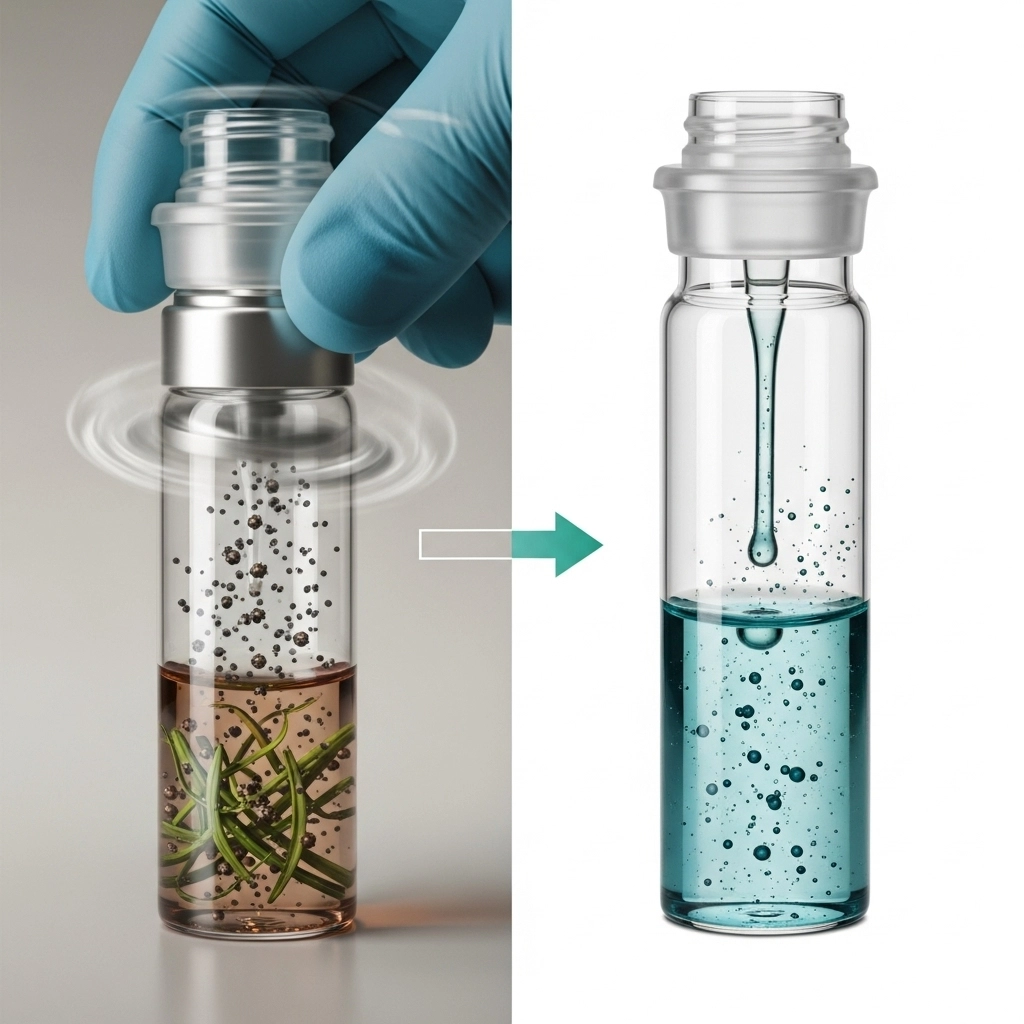Optimizing Food Safety Testing with QuEChERS Extraction Modifications

ImageFX (2025)
Methods for pesticide analysis have evolved over the years as many permutations for extraction, cleanup, separation, and detection have been implemented for various applications. Environmental and consumer health guidelines have changed over this time as well necessitating migration from older methods, such as the use of chlorinated solvents, to new and improved approaches.
Understanding QuEChERS Extraction in Food Safety
A key advantage of QuEChERS is the relative simplicity of the sample preparation workflow. This is in contrast to more tedious techniques such as the use of ethyl acetate, microwave-assisted extraction (MAE), accelerated solvent extraction (ASE), and supercritical fluid extraction (SFE) which all involve multi-step, sequential, and are limited to semi-automatable processes.
The Core QuEChERS Method: A Step-by-Step Overview
In the basic method, material in solution or resuspended in water is combined with acetonitrile. A large excess of salts is added to assist in the extraction of both polar and non-polar compounds. The fractionated extract is then subjected to a dispersive solid phase extraction (dSPE) step to further remove matrix contaminants. The clarified extract can then be analyzed directly by GC-MS or LC-MS/MS with proper standards, dilutions, and conditions.
The inclusion of buffers to the salts during the extraction process assists in improving analyte stability and extract quality. This in turn has led to standardized methods, the official AOAC method using acetate buffer and the official CEN method using citrate buffer.
QuEChERS Modifications for Food Analysis
Modifications of the AOAC method are used for analysis of specific food types. Fruits and vegetables with high water content can be subjected to extraction directly following homogenization. Dry food such as cereals and grains must be resuspended in water prior to the addition of acidified acetonitrile. Beyond the inclusion of acetic acid in the extraction solvent, both magnesium sulfate and sodium acetate are included in the salts mixture to further clarify and condition the material prior to clean up and analysis.
The CEN method is similar to the AOAC method with a few distinctions. The sodium acetate is swapped for sodium citrate, and acetic acid is excluded during the initial acetonitrile addition. While the dSPE cleanup step includes further addition of magnesium sulfate in both methods, the CEN method includes addition of formic acid during this step for further sample stabilization.
QuEChERS and Pesticides Analysis
Each method has been successful in extracting hundreds of pesticide compounds for analysis. There are considerations, however, that weigh heavily on the performance of the methods with certain food types. The pH of the acetonitrile extraction solvent can dramatically affect the efficiency of phase partitioning of the compounds thus decreasing the yields. The pH of the extract has implications on the final analysis as well, due to stability issues of certain pesticides at this stage.
The modified QuEChERS extraction methods are very effective in analysis of high water content food types such as fruits and vegetables. Although again, cereals, dried fruit, and other low water content materials require specified addition of water prior to addition of the initial acetonitrile extraction solvent.
Further details into the chemical mechanisms involved in the extraction process are explored in separate articles. The chemical composition of the dSPE cleanup step and the mechanisms involved are beyond the scope of this article as well. The choice of analytical platform depends on the properties of the analyte(s) in question. Tandem MS/MS is used for analytes that are amenable to LC separations, while non-polar compounds are more suited for GC/MS.
Future Outlook for QuEChers
Over many years and iterations of method development, the QuEChERS liquid-liquid extraction method, and modifications thereof, has emerged a highly effective technique for multi-residue pesticide analysis. The versatility of the method for food stuffs ranging from fruits and vegetables to cereals and dry foods, supports its use as a universal solution. The formal guidelines established by AOAC and CEN around the use and standardization of this method for pesticides analysis indicates it’s significance in the food safety testing industry.
Visit the LabX QuEChERS Product Page for more information and product listings
Updated July 2025










